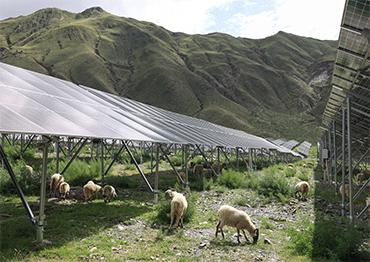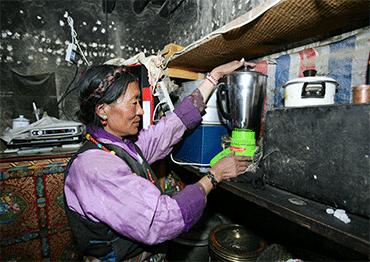Xizang has an average elevation of over 4,000 meters and covers more than 1.2 million square kilometers.
For a long time, the extensive uninhabited zones and rugged mountains delayed the integration of remote communities into the national power grid, which was long referred to as a “power desert.” As a result, Xizang had the lowest grid connectivity in China, and was the last region connected to the national power grid.
When Xizang was peacefully liberated in 1951, its electricity generation capacity was zero. It was not until 1956 that the first thermal power plant in Xigaze was built, marking the beginning of the region’s power development. However, construction progressed slowly due to challenges such as extreme cold and low oxygen levels, permafrost and difficulties in transporting materials.
When Xizang Autonomous Region was established in 1965, electricity was still out of reach for most herders and farmers, except in a few places like Lhasa and Xigaze. Families still relied on collecting and burning yak dung and used kerosene lamps for light.
Since then, the Chinese central government has provided strong support to improve Xizang’s electricity access. Over the past six decades, a series of core power stations were built, with counties, townships and villages developing small-scale hydropower and solar stations.
Taking advantage of the plateau’s strong solar radiation, long daylight hours and high winds, Xizang has launched extensive research and development in solar, wind and geothermal energy, ushering in an era of multi-source energy supply.
During the 14th Five-Year Plan (2021-2025), clean energy investment accounted for 30 percent of Xizang’s annual total investment on priority projects.
At the end of 2023, the world’s highest altitude photovoltaic power station, Caipeng Photovoltaic Power Station, standing at an elevation of 5,100 meters, went into operation in Shannan City. A year later, the project’s second phase, at a maximum elevation of 5,228 meters, started operation. Its annual energy generation powers 50,000 households with a reduction of more than 100,000 tons of carbon emissions.

 Old Version
Old Version


